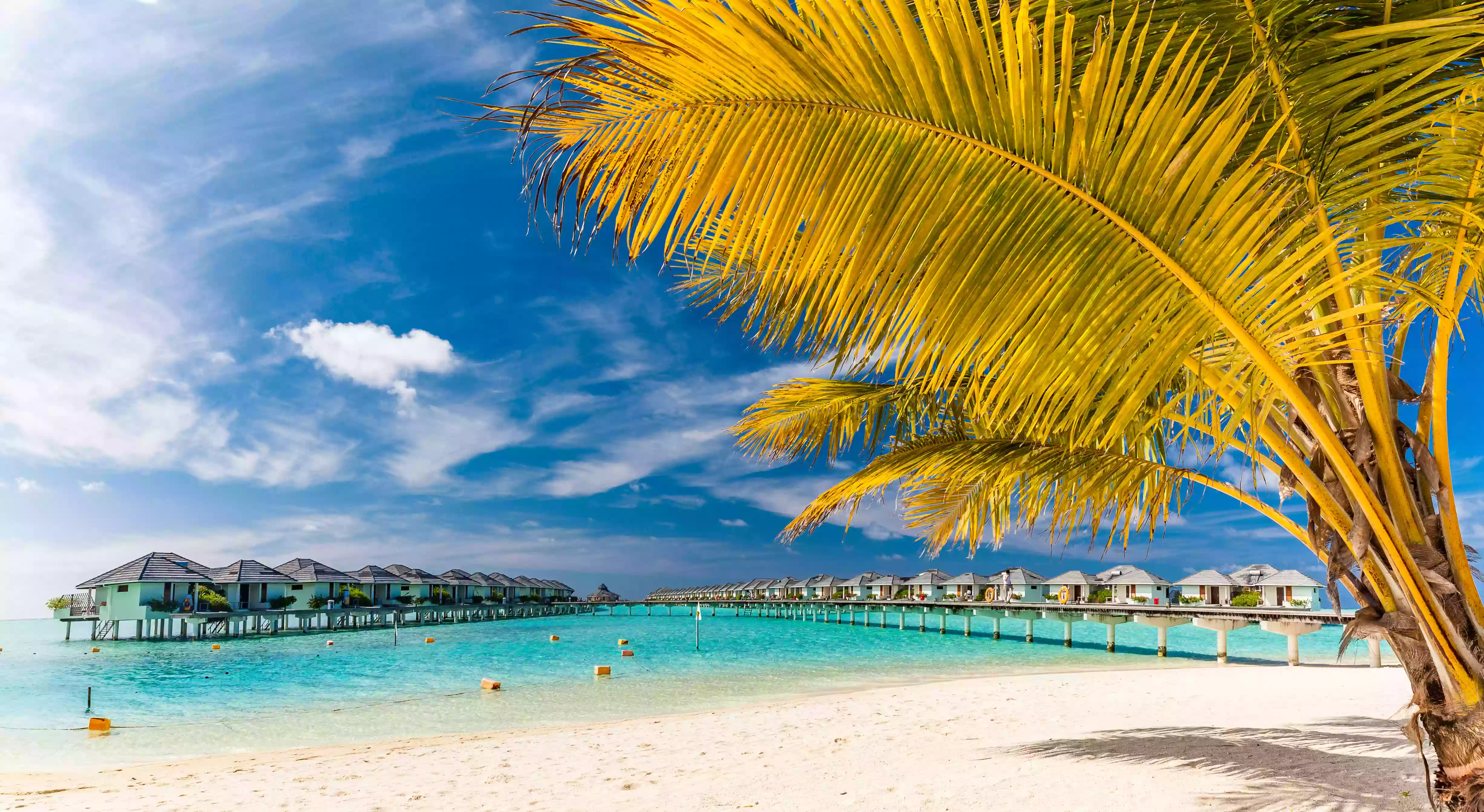Discovering Paradise: The Ultimate Guide to the Best Time to Visit the Maldives
Morgan Wiggins
Apr20,2023 • 4 min read

T
he Maldives, a tropical paradise renowned for its pristine beaches, crystal-clear waters, and vibrant marine life, is a dream destination for many. But when is the best time to visit this island nation? In this article, we'll explore the various factors that influence the ideal time to plan your Maldivian getaway, from weather patterns and peak travel seasons to marine life encounters and cultural events.
Weather Patterns and Seasons in the Maldives
The Maldives has a tropical climate with two distinct seasons: the dry season (northeast monsoon) from November to April and the wet season (southwest monsoon) from May to October. The dry season is characterized by sunny skies, calm seas, and lower humidity, making it the most popular time for tourists. The wet season brings higher humidity, rainfall, and rougher seas but still offers plenty of sunshine.
Peak vs. off-peak travel seasons
Peak travel season in the Maldives corresponds to the dry season, with the highest tourist numbers occurring between December and March. During this period, resorts tend to be more crowded and prices are at their highest. Off-peak travel, during the wet season, offers more affordable rates and fewer crowds. However, some resorts and restaurants may be closed during this time.
Monsoon Season and its Impact on Tourism
The southwest monsoon, from May to October, sees more rain and rougher seas than the dry season. While this might discourage some travelers, it also means fewer tourists and lower prices. Additionally, the rain often comes in short bursts, leaving plenty of time for sunshine and outdoor activities. For those willing to risk occasional showers, visiting during the monsoon season can be a cost-effective option.
Marine life encounters: Whale Sharks and manta rays
One of the main attractions of the Maldives is its diverse marine life, including whale sharks and manta rays. The best time to spot these gentle giants is during the transitional months between the two monsoons: February to April and October to November. During these periods, plankton concentrations attract whale sharks and manta rays, providing unforgettable encounters for snorkelers and divers.
Festivals and cultural events throughout the year
The Maldives has a rich cultural heritage, and visiting during a festival or event can provide unique insights into local traditions. Some notable festivals include:
- Ramadan (date varies): A month-long Islamic observance marked by fasting and prayer, culminating in Eid al-Fitr, a festive holiday with feasting and celebrations.
- Independence Day (July 26): Commemorates the Maldives' independence from British rule, featuring parades and cultural performances.
- Bodu Eid (date varies): Also known as Eid al-Adha, this Islamic festival involves feasting, prayer, and charity.
- Maldives Fishermen's Day (December 10): Celebrates the fishing industry's importance to Maldivian culture with music, dance, and boat races.
Island Hopping and exploring remote atolls
The Maldives is an archipelago of 26 atolls and over 1,000 islands, each with its unique charm. The dry season (November to April) is the best time for island hopping, as the calm seas make for smooth sailing and easier navigation. Travelers can charter private yachts or join liveaboard cruises to explore the more remote and untouched atolls, offering a chance to discover hidden gems and enjoy a more authentic Maldivian experience.
Honeymoon and romantic getaways in the Maldives
The Maldives is a popular honeymoon and romantic getaway destination, with its idyllic beaches, overwater villas, and stunning sunsets. The dry season's pleasant weather and clear skies make it the ideal time for couples to enjoy romantic beachside dinners, private island picnics, and candlelit cruises. However, visiting during the shoulder season (April-May and October-November) can still provide a memorable experience with slightly fewer crowds and more competitive prices.
Spa and wellness retreats: seasonal offers and Experiences
The Maldives is home to numerous luxury resorts offering spa and wellness retreats. While these experiences are available year-round, some resorts may offer special promotions during the off-peak season, providing an opportunity to indulge in rejuvenating treatments and holistic therapies at a more affordable price. Additionally, the tranquil atmosphere during the off-peak season can further enhance your relaxation and wellness experience.
Culinary Experiences and Seasonal Maldivian Cuisine
Maldivian cuisine is a delightful fusion of Indian, Sri Lankan, and Arabian flavors, with a focus on fresh seafood and coconut. While you can enjoy delicious Maldivian dishes throughout the year, some seasonal ingredients may vary. Visiting during festive periods like Ramadan, Eid al-Fitr, and Eid al-Adha also presents an opportunity to taste unique and traditional dishes that may not be available at other times.
Climate change and its impact on the Maldives travel industry
Climate change poses a significant threat to the Maldives, with rising sea levels and increasingly unpredictable weather patterns. As a responsible traveler, consider visiting during the shoulder seasons when the tourist influx is lower, reducing the pressure on local resources. Also, choose eco-friendly accommodations and engage in sustainable activities to minimize your environmental impact.
Conclusion
The best time to visit the Maldives depends on the activities and experiences you prioritize during your stay. For island hopping and romantic getaways, the dry season provides the most favorable weather conditions. However, if you're looking for spa retreats or unique culinary experiences, the shoulder and off-peak seasons may offer better deals and a more intimate atmosphere. Lastly, don't forget to consider the impact of climate change on this fragile paradise and make choices that promote sustainability and responsible tourism.

